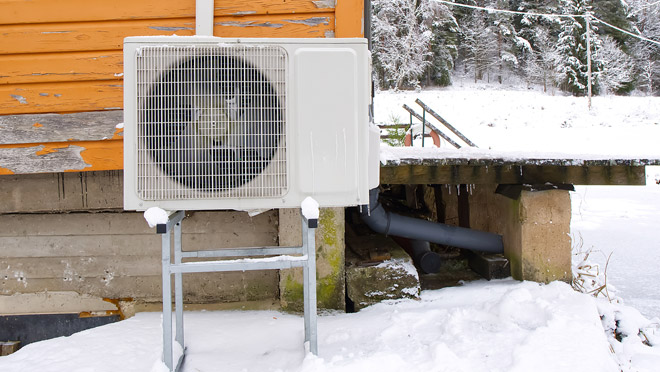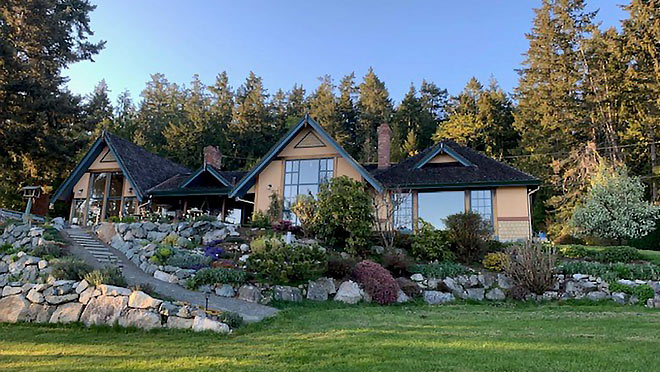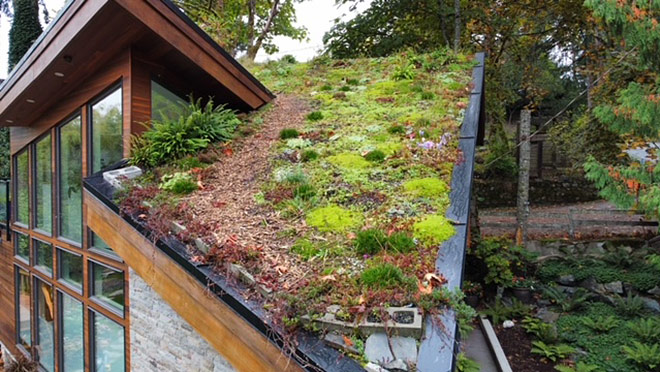Heat pump mythbusters tackle key questions
Don't let misinformation around the technology trip you up
As the popularity of heat pumps continues to rise, there's a lot of information available, especially online. But while the internet can be a great place to find answers to questions about technology, it can also be a source of disinformation.
We're here to clear up a few myths around air source electric heat pumps. The benefits of making the switch extend well beyond the fact that heat pumps are both extremely energy efficient and – because they're powered by water in B.C. – have the ability to cut household carbon emissions by two tonnes or more per year.
To ensure you're getting the right heat pump for your home, find a contractor with training and experience with heat pumps. And if you plan to take advantage of heat pump rebates, you'll need to hire a Home Performance Contractor Network (HPCN) member for your heat pump installation to be eligible for those rebates.
On with the myths...
Myth No. 1: They can only be used for heating
Don't be fooled by the name 'heat' pump. It's actually a technology designed to work two ways – transferring heat into your home to warm it in the winter, and transferring heat out of your home to cool it in the summer. That's because heat pumps have a reversing valve that can switch the flow of coolant.
During record-setting heat waves in B.C. the past two years, many British Columbians discovered the cool advantage of heat pumps, either by experiencing heat pump cooling in their own home for the first time, or by taking refuge in the heat pump-cooled home of a friend or relative.
Myth No. 2: They're expensive to install
While the cost of purchasing and installing a heat pump varies depending on the home's individual characteristics, rebates are available to reduce the purchase cost.
While some higher-end models can cost a bit more, the average cost to buy and install a heat pump for smaller homes is about $7,000 and about $16,000 for larger homes. This is comparable to the cost of installing both a gas furnace and central air conditioning.
Myth No. 3: They cost more to operate than other heating systems
With rising natural gas prices in B.C., for the average household in B.C., it's now less expensive to heat with an electric heat pump than a natural gas furnace. Plus, by switching to a heat pump you get the added benefit of efficient home cooling and lower household greenhouse gas emissions.
If you currently rely on electric baseboards to heat your home, you'll also see significant savings by switching to a heat pump. This is because heat pumps are up to 300% more efficient than baseboard heaters. You'll save even more if you currently have central or portable air conditioning as well.
Myth No. 4: They're pretty noisy
They used to be noisy, because early heat pump compressors were often loud. Even some of the lowest quality ones available today can be quite noisy, but many modern heat pumps running at full capacity operate at around just 60 decibels (dB). That's pretty low – about the same level of noise as a conversation in a restaurant.
It's also worth remembering that since heat pump compressors are located outside, it's highly unlikely you'll be able to hear one in your home.
If you're buying a ductless heat pump, they're generally very quiet, too. But you should check the sound rating of different indoor head units, especially if you're installing them near sleeping areas, including the bedroom of a neighbour's home that may sit close to yours.
Myth No. 5: Heat pumps are no match for a B.C. winter
With advancements in heat pump technology, there are heat pump models available in B.C. that can operate in temperatures as low as -30°C. Talk to a licensed contractor to ensure you get the right model to meet the heating needs for your housing type and region.
In some of the coldest places in B.C., a contractor may recommend a backup heating source to help meet a home's heating needs during periods of extreme chill.
Learn more about how heat pumps measure up against cold climates in B.C.
Myth No. 6: They require a lot of maintenance
Every heating system requires regular maintenance to ensure it remains in peak working order. As a rough guide, you should plan to have the settings and the mounting checked six months after installation, and then schedule maintenance every one or two years going forward. Be sure to check with your manufacturer for a specific schedule.
In winter, the routine is to regularly remove debris and snow around the home to maintain air flow. Your outdoor unit works hard to move heat around so keeping it clear will keep it working efficiently. And make sure the area around the indoor unit isn't cluttered. Couches, cabinets, and curtains can prevent air circulation.
Myth No. 7: They need to run 24/7
When heat pumps are properly set up, they cycle on and off as they need to. A heat pump works by taking the heat from the air outside your home and moving it indoors. They're most efficient when they're set at a consistent temperature, that's why we recommend to “set it and forget it”. The heat pump will work to maintain the ideal temperature by cycling on-and-off as needed.
In contrast to other systems, such as electric baseboard heating, you should resist the temptation to turn your heat pump down at night, or when you leave the home. If you're going to be away from home for more than 24 hours, turn it down when you leave and gradually increase the temperature in 2°C increments when you return.
Myth No. 8: They can only be installed in new builds
Besides apartments, heat pumps can be fitted to virtually any property. The amount of work needed to install one will depend on the existing heating system, and what type of heat pump you choose.
The other factor to consider is how well insulated your home is. Make sure you seal any air leaks in your home and if possible, upgrade the insulation before your contractor does a heat-loss analysis to determine the size of the heat pump you need. It may even enable you to use a smaller, less expensive system.
If you plan to upgrade your insulation, see available insulation rebates.
Myth No. 9: They take up a lot of space, and can be unsightly
The outdoor compressor for an average air source heat pump is not particularly big. Your contractor will recommend a suitable place to locate it – ideally along the side of your house or somewhere relatively out of sight.
If you choose a ductless system, then you'll need an outdoor compressor and ceiling-mounted indoor head units. The number of indoor units will depend on the size and layout of your home.
If your home already has ducting and you're able to install a central heat pump, you'll also need an outdoor compressor. With a few modifications, it should work with your existing ducting and vents.
Myth No. 10: The technology is still fairly new and unproven
Heat pump technology is changing the way homes are heated and cooled in many places in the world.
Heat pumps are growing quickly in popularity because they're very efficient – up to three times as efficient as gas furnaces – and getting more efficient as new models are rolled out. In B.C., they're extremely popular on southern Vancouver Island in particular. And in Norway – hardly a tropical country – heat pumps are now in six of 10 homes.


